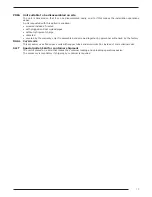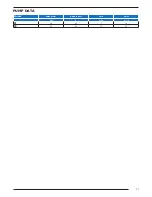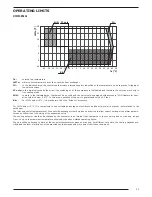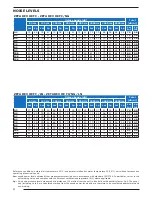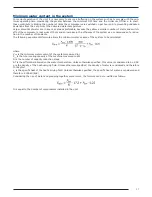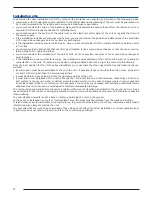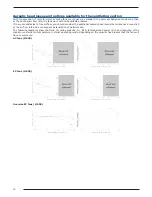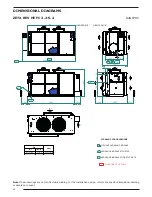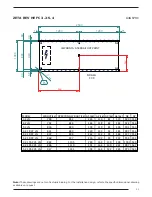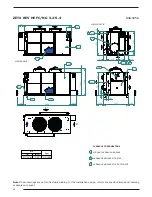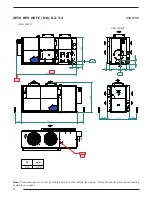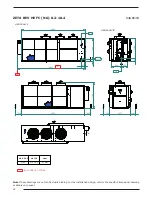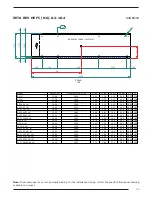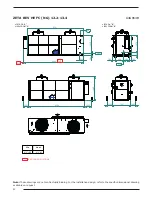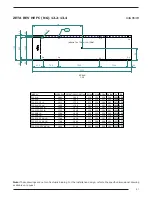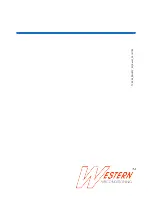
28
Installation site
To determine the best installation site for the unit and its orientation, you should pay attention to the following points:
•
compliance with the clearance spaces indicated in the official dimensional drawing of the unit must be guaranteed so
as to ensure accessibility for routine and non-routine maintenance operations
•
you should consider the origin of the hydraulic pipes and their diameters because these affect the radiuses of curva-
ture and therefore the spaces needed for installing them
•
you should consider the position of the cable inlet on the electrical control panel of the unit as regards the origin of
the power supply
•
if the installation includes several units side by side, you should consider the position and dimensions of the manifolds
of the user-side exchangers and of any recovery exchangers
•
if the installation includes several units side by side, you should consider that the minimum distance between units
is 3 metres
•
you should avoid all obstructions that can limit air circulation to the source-side exchanger or that can cause recircu-
lation between air supply and intake
•
you should consider the orientation of the unit to limit, as far as possible, exposure of the source-side exchanger to
solar radiation
•
if the installation area is particularly windy, the orientation and positioning of the unit must be such as to avoid air
recirculation on the coils. If necessary, we advise making windbreak barriers in order to prevent malfunctioning.
Once the best position for the unit has been identified, you must check that the support slab has the following charac-
teristics:
•
its dimensions must be proportionate to those of the unit: if possible, longer and wider than the unit by at least 30
cm and 15/20cm higher than the surrounding surface
•
it must be able to bear at least 4 times the operating weight of the unit
•
it must allow level installation of the unit: although the unit is installed on a horizontal base, make slopes in the sup-
port surface to convey rain water or defrost water to drains, wells or in any case to places where it cannot generate
an accident hazard due to ice formation. All heat pump version units are equipped with discharge manifolds for the
condensed water; these can be manifolded to facilitate condensate discharge.
The units are designed and built to reduce to a minimum the level of vibration transmitted to the ground, but it is in any
case advisable to use rubber or spring anti-vibration mounts, which are available as accessory and should be requested
when ordering.
The anti-vibration mounts must be fixed on before positioning the unit on the ground.
In the event of installation on roofs or intermediate floors, the pipes must be isolated from the walls and ceilings.
It is advisable to avoid installation in cramped places, to prevent reverberations, reflections, resonances and acoustic
interactions with elements outside the unit.
It is essential that any work done to soundproof the unit does not affect its correct installation or correct operation and,
in particular, does not reduce the air flow rate to the source-side exchanger.




